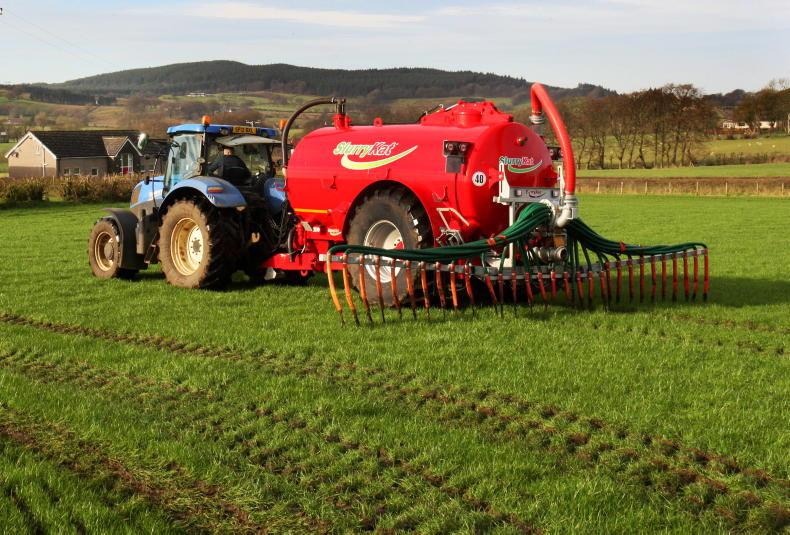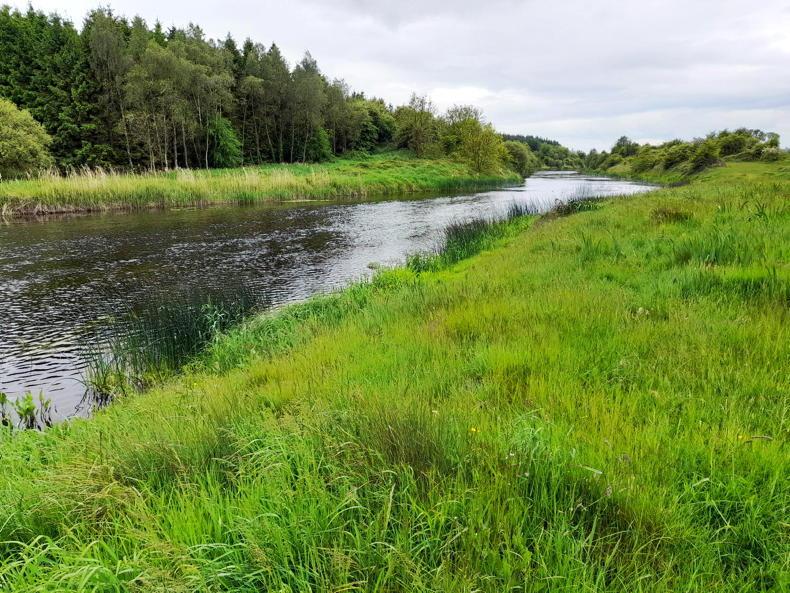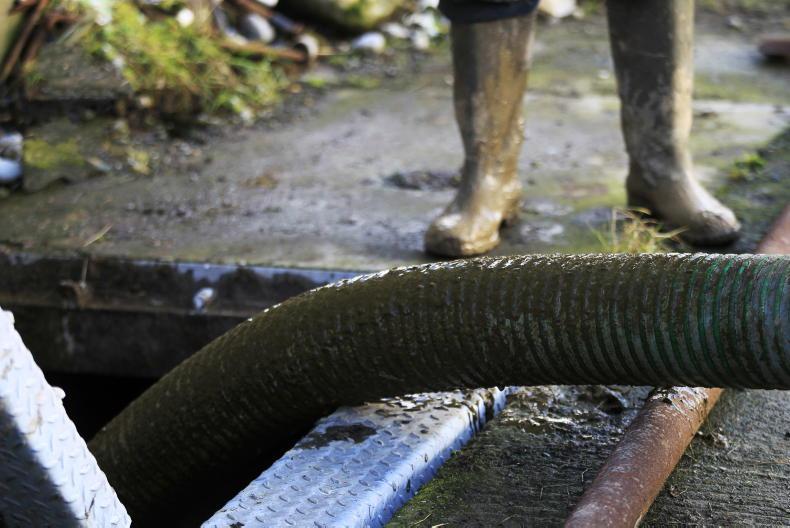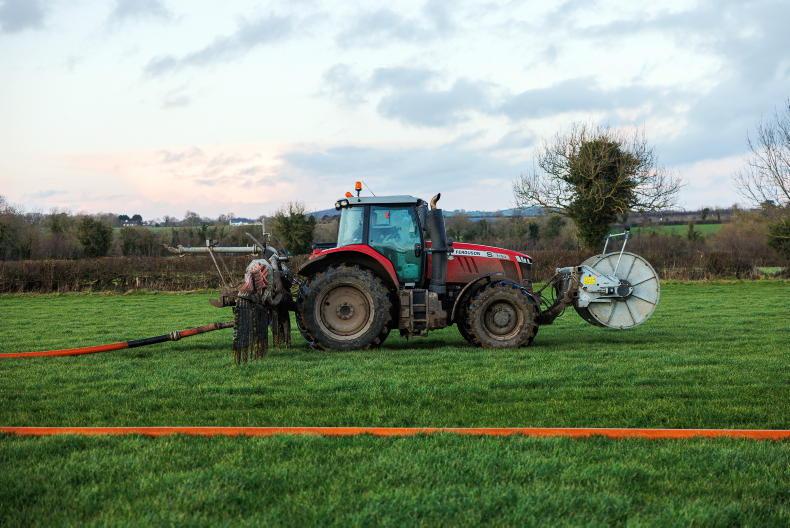Over the past number of years, there has been an increasing requirement for more and more farmers to transition towards Low Emission Slurry Spreading (LESS) technology.
This year, another group of farmers will be faced with new slurry spreading rules. Farmers with a stocking rate of above 130kg organic nitrogen per hectare must apply all slurry with LESS kit. The rules were introduced following a review of Ireland’s Nitrates Action Programme in 2021 and are enforced under the Nitrates Directive.
It became compulsory for farmers with a grassland stocking rate of over 150kg organic nitrogen per hectare to apply slurry through LESS equipment in 2023, along with pig slurry and the application of slurry to arable land (or incorporation within 24 hours). The rules were in place prior to 2023 for those farming above 170kg organic N/ha.
As a result, many farmers are continuing to avail of grant aided support through TAMS (Targeted Agricultural Modernisation Scheme) to make the move to LESS technology.
Forward speed is key
Farmers should be aware that the forward speed when applying slurry through the LESS systems, such as a dribble bar or a trailing shoe, need to be significantly increased compared to using a traditional splash plate, in order to achieve the same application rate.

Farmers should be aware that the forward speed when applying slurry through the LESS systems, such as a dribble bar or a trailing shoe, need to be significantly increased compared to using a traditional splash plate, in order to achieve the same application rate.
\ Houston Green
When you use a LESS application system for the first time, you will notice is how quick you will empty the tanker in comparison to when using the splash plate.
To prove this, we carried out a trial on the Irish Farmers Journal demonstration farm using a 2,750-gallon tanker with an 11,000-litre pump and a nine-metre dribble bar.
When using the splash plate, the average working width of the application was measured at approximately 13.5m, while the time to empty was noted as approximately six minutes and 25 seconds. Next, we applied slurry through the dribble bar, using the same tanker.
The nine-metre dribble bar distributed the slurry through 40 outlets which were fed by a Vogelsang distributor. It’s time to empty was approximately four minutes and 25 seconds.
Why did the tanker empty quicker?
Slurry being applied through the splash plate had to be fed out through the one narrow gap, measured at approximately 55mm wide. However, when we moved to the LESS system, the opening feeding the macerator is increased two-fold and in some cases this goes up three-fold, in addition to far more outlets.
The working width is significantly reduced, while the flow of slurry to feed the large number of outlets is increased, so naturally the tanker will empty far quicker.
The point to note is that when using LESS systems, the tractor’s forward speed needs to be significantly increased to match the dribble bar’s application rate. This factor is often overlooked, but forward speed is key to an even application at the correct rate.
Target application rate
To measure the difference in forward speed required to apply our target rate of 2,500 gallons per acre, we used the Teagasc slurry calibration calculator. This is available for free on its website.
We found this calculator to be one of the simplest available.

When using the dribble bar, its time to empty was 4 minutes and 25 seconds and and forward speed was recommended at 7km/h.
It requires four pieces of information to determine the correct forward speed required to apply slurry at the desired rate. The details required include the size of the tanker being used (gallons), the working width of the application system (metres), the time taken to empty the tanker and the targeted application rate. The calculator will then indicate the required forward speed in km/h to achieve the desired rate.
By entering all the above information from our trial, the calculator advised operating at a forward speed of 3.2km/h when using the splash plate, and over twice that, 7km/h, when applying slurry with the
dribble bar.
Although a 2,750-gallon tanker is larger than what most farmers are running, so too is the 9m dribble bar. The most common working width LESS system being sold to farmers in Ireland continues to be 7.5m. Despite this, the concept of the increased forward speed remains the same. When moving to a new application method, it is important to ensure that you are applying slurry evenly and at the correct rate.
Over the past number of years, there has been an increasing requirement for more and more farmers to transition towards Low Emission Slurry Spreading (LESS) technology.
This year, another group of farmers will be faced with new slurry spreading rules. Farmers with a stocking rate of above 130kg organic nitrogen per hectare must apply all slurry with LESS kit. The rules were introduced following a review of Ireland’s Nitrates Action Programme in 2021 and are enforced under the Nitrates Directive.
It became compulsory for farmers with a grassland stocking rate of over 150kg organic nitrogen per hectare to apply slurry through LESS equipment in 2023, along with pig slurry and the application of slurry to arable land (or incorporation within 24 hours). The rules were in place prior to 2023 for those farming above 170kg organic N/ha.
As a result, many farmers are continuing to avail of grant aided support through TAMS (Targeted Agricultural Modernisation Scheme) to make the move to LESS technology.
Forward speed is key
Farmers should be aware that the forward speed when applying slurry through the LESS systems, such as a dribble bar or a trailing shoe, need to be significantly increased compared to using a traditional splash plate, in order to achieve the same application rate.

Farmers should be aware that the forward speed when applying slurry through the LESS systems, such as a dribble bar or a trailing shoe, need to be significantly increased compared to using a traditional splash plate, in order to achieve the same application rate.
\ Houston Green
When you use a LESS application system for the first time, you will notice is how quick you will empty the tanker in comparison to when using the splash plate.
To prove this, we carried out a trial on the Irish Farmers Journal demonstration farm using a 2,750-gallon tanker with an 11,000-litre pump and a nine-metre dribble bar.
When using the splash plate, the average working width of the application was measured at approximately 13.5m, while the time to empty was noted as approximately six minutes and 25 seconds. Next, we applied slurry through the dribble bar, using the same tanker.
The nine-metre dribble bar distributed the slurry through 40 outlets which were fed by a Vogelsang distributor. It’s time to empty was approximately four minutes and 25 seconds.
Why did the tanker empty quicker?
Slurry being applied through the splash plate had to be fed out through the one narrow gap, measured at approximately 55mm wide. However, when we moved to the LESS system, the opening feeding the macerator is increased two-fold and in some cases this goes up three-fold, in addition to far more outlets.
The working width is significantly reduced, while the flow of slurry to feed the large number of outlets is increased, so naturally the tanker will empty far quicker.
The point to note is that when using LESS systems, the tractor’s forward speed needs to be significantly increased to match the dribble bar’s application rate. This factor is often overlooked, but forward speed is key to an even application at the correct rate.
Target application rate
To measure the difference in forward speed required to apply our target rate of 2,500 gallons per acre, we used the Teagasc slurry calibration calculator. This is available for free on its website.
We found this calculator to be one of the simplest available.

When using the dribble bar, its time to empty was 4 minutes and 25 seconds and and forward speed was recommended at 7km/h.
It requires four pieces of information to determine the correct forward speed required to apply slurry at the desired rate. The details required include the size of the tanker being used (gallons), the working width of the application system (metres), the time taken to empty the tanker and the targeted application rate. The calculator will then indicate the required forward speed in km/h to achieve the desired rate.
By entering all the above information from our trial, the calculator advised operating at a forward speed of 3.2km/h when using the splash plate, and over twice that, 7km/h, when applying slurry with the
dribble bar.
Although a 2,750-gallon tanker is larger than what most farmers are running, so too is the 9m dribble bar. The most common working width LESS system being sold to farmers in Ireland continues to be 7.5m. Despite this, the concept of the increased forward speed remains the same. When moving to a new application method, it is important to ensure that you are applying slurry evenly and at the correct rate.












SHARING OPTIONS